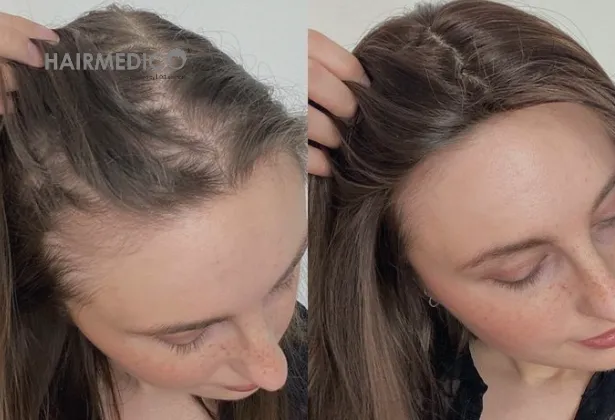
Hair restoration has become one of the most sought-after cosmetic procedures in recent years. Among the options available, a transplant involving 500 hair grafts is perfect for individuals in the early stages of hair loss. It’s less invasive, more affordable, and capable of delivering highly natural results when done by skilled professionals.
In this in-depth article, we’ll walk you through everything you need to know about the 500 grafts hair transplant, including what kind of results to expect, recovery tips, success rates, and how the process works in 2025.
A hair graft refers to a group of hair follicles taken from a donor area, usually the back or sides of the scalp. These follicles are then implanted into areas experiencing hair thinning or baldness.
500 hair grafts typically consist of around 1,000–1,200 individual hairs, depending on the thickness and number of follicles per graft. This amount is often suitable for treating:
Early-stage male or female pattern baldness
Minor receding hairlines
Small bald spots or thinning patches
Beard or eyebrow enhancement
If you’re noticing early signs of hair loss or have a small area you’d like to thicken, a 500 graft hair transplant could be ideal. You may be a good candidate if you:
Are in the early stages of hair thinning
Have a stable donor area
Want a natural and subtle improvement
Prefer a minimally invasive procedure with faster healing
Are looking for a lower-cost entry point into hair restoration
It’s important to have realistic expectations — 500 grafts won’t dramatically change your appearance, but it can significantly enhance thin or patchy areas.
Prior to the surgery, you'll meet with a hair transplant specialist to evaluate your scalp and overall health. Here’s what typically happens during the pre-op phase:
Medical History Review: The surgeon checks for conditions that may affect healing or growth.
Scalp Examination: Determines the density and health of donor hair.
Design Planning: A detailed hairline or patch treatment plan is designed.
Instructions Given: Patients are asked to avoid alcohol, smoking, and blood-thinners before the surgery.
Photographs may be taken to document progress, and a discussion about expected results ensures you’re aligned with the surgical plan.
The entire process is generally completed within 2–4 hours depending on the technique and patient anatomy. Most clinics use FUE (Follicular Unit Extraction), a modern, minimally invasive method.
Key steps include:
Local anesthesia applied to numb the donor and recipient areas
Individual follicles harvested using a micromotor or manual punch tool
Tiny incisions made in the recipient area following natural hair growth angles
Grafts inserted with precision to ensure density and natural appearance
Patients can typically go home the same day, and downtime is minimal compared to larger graft procedures.
Healing from a 500 graft transplant is usually fast. Most people resume normal activities within 2–3 days. Key post-op care instructions include:
Avoid touching or scratching the recipient area
Use prescribed saline spray to keep grafts hydrated
Avoid sun exposure, swimming, and heavy exercise for the first 10–14 days
Sleep with your head elevated for the first few nights to reduce swelling
Hair shedding (known as “shock loss”) can occur in the first 2–4 weeks. This is normal — it clears the way for new, permanent hair growth.
Here is a typical growth timeline after the procedure:
0–1 Month: Redness and scabbing disappear. Shedding begins.
2–3 Months: Follicles enter a dormant phase, no new hair yet.
4–6 Months: Noticeable new growth starts, typically fine and light.
6–9 Months: Hair thickens, takes on more texture.
12 Months: Final results are visible with full density achieved.
This progression can vary slightly based on individual health, scalp condition, and post-op care.
Even though 500 grafts may sound like a small number, the results can be very impactful in the right areas. Many patients use this procedure to:
Define or restore a receding hairline
Fill in small bald patches
Blend thinning spots for a more uniform look
Enhance beards or sideburns
For verified results and high-quality photos from real patients, visit the HairMedico Before and After Gallery. This clinic has helped thousands achieve natural hairlines with precision and care.
The field of hair restoration is rapidly evolving. In 2025, you benefit from:
Advanced Techniques: Safer, more precise tools for graft extraction and placement
Improved Healing Products: Modern aftercare options reduce recovery time
Natural Results: Better density matching and growth direction accuracy
Shorter Sessions: 500 grafts can be done quickly and comfortably in one sitting
Moreover, patient education and transparency are higher than ever, helping you make more informed decisions.
While prices vary by country, clinic, and surgeon experience, the cost of 500 grafts in 2025 is typically more affordable than larger procedures. Factors that influence the cost include:
Surgeon expertise and credentials
Clinic location and technology used
Method of transplant (FUE is usually slightly more expensive than FUT)
Additional services like PRP therapy or post-op care kits
On average, you can expect to pay between $1,000 to $2,500 for 500 grafts at a reputable clinic.
The success of your transplant heavily depends on the clinic you choose. Look for clinics that:
Specialize in hair restoration
Offer verified before and after photos
Have experienced, board-certified surgeons
Provide a transparent consultation process
Use modern FUE or DHI techniques
One highly trusted provider in the field is HairMedico, known for consistent, natural results and international clientele. Visit their Before and After page to explore real transformations.
A 500 hair grafts transplant in 2025 is a smart, low-risk choice for individuals looking to treat early hair loss with subtle, natural improvements. The short recovery time, affordability, and realistic results make it a popular option among men and women alike.
If you're ready to take the next step toward hair restoration, start with a professional consultation. Make sure you set realistic expectations, follow post-op guidelines, and choose a reputable clinic with proven results.
For visual proof and more detailed case studies, explore the HairMedico Before and After Gallery — where transformation begins.